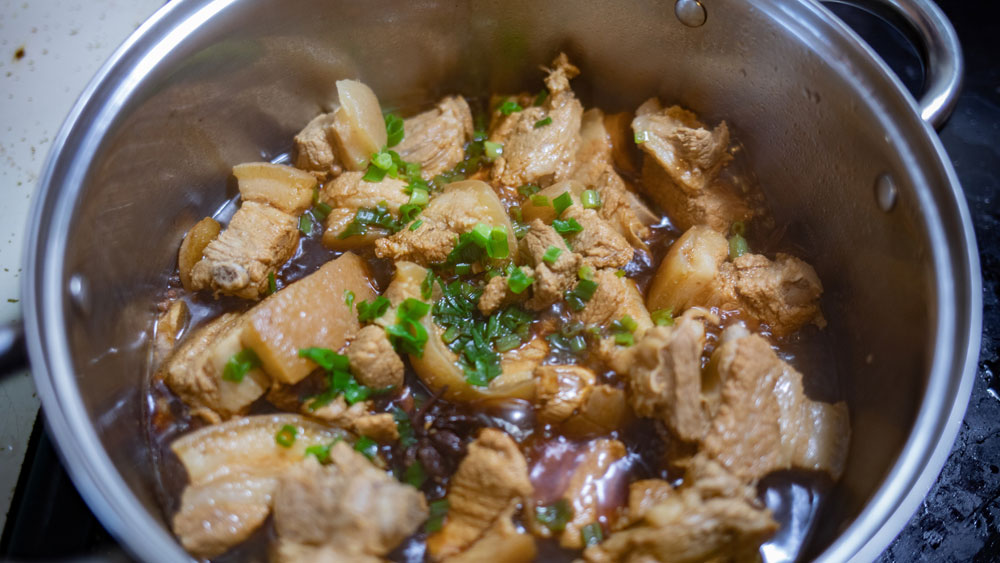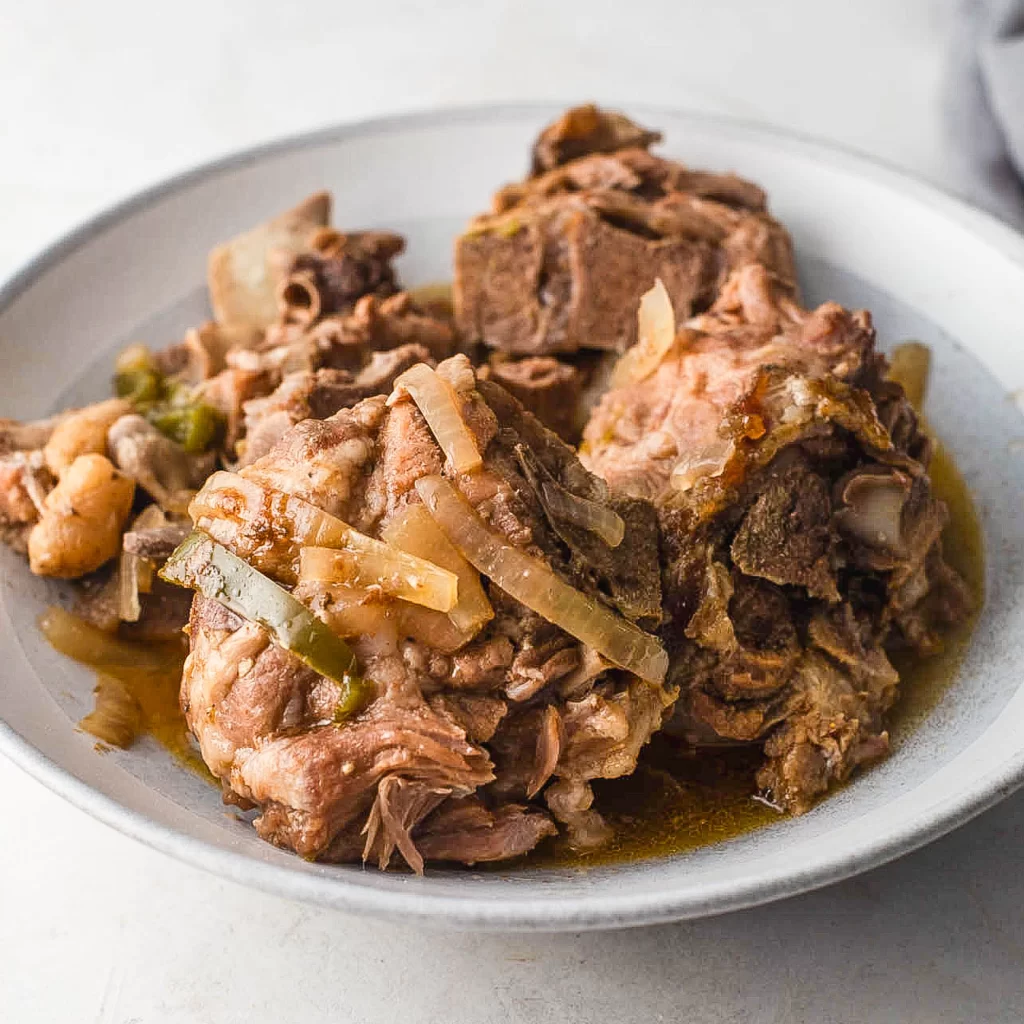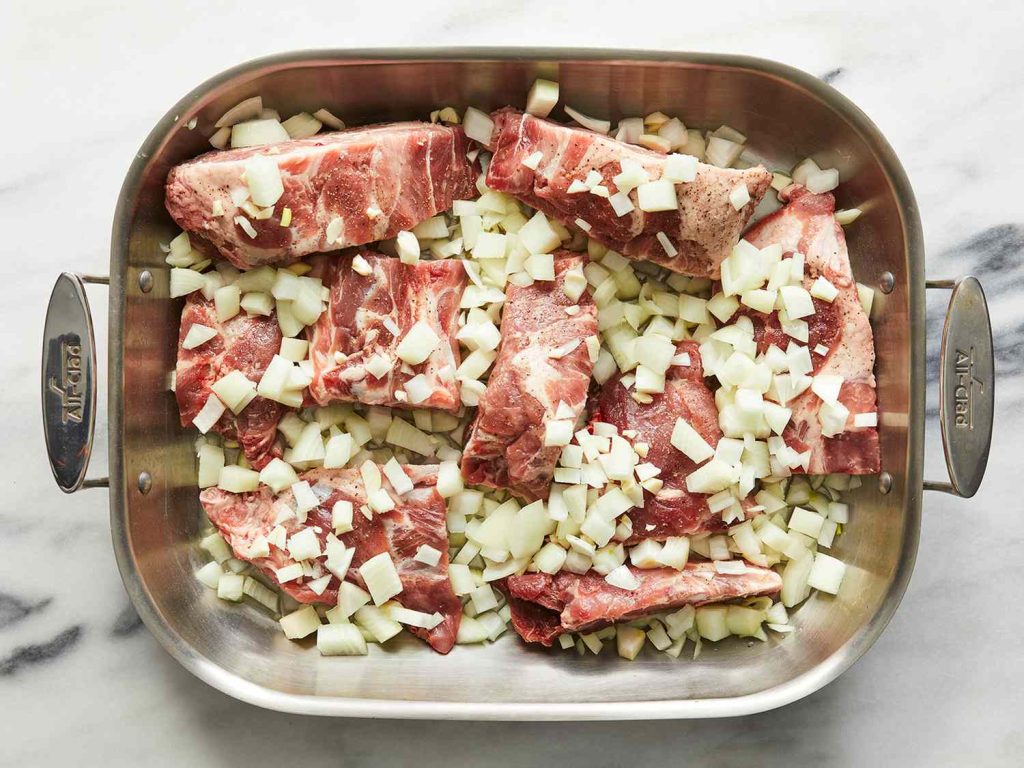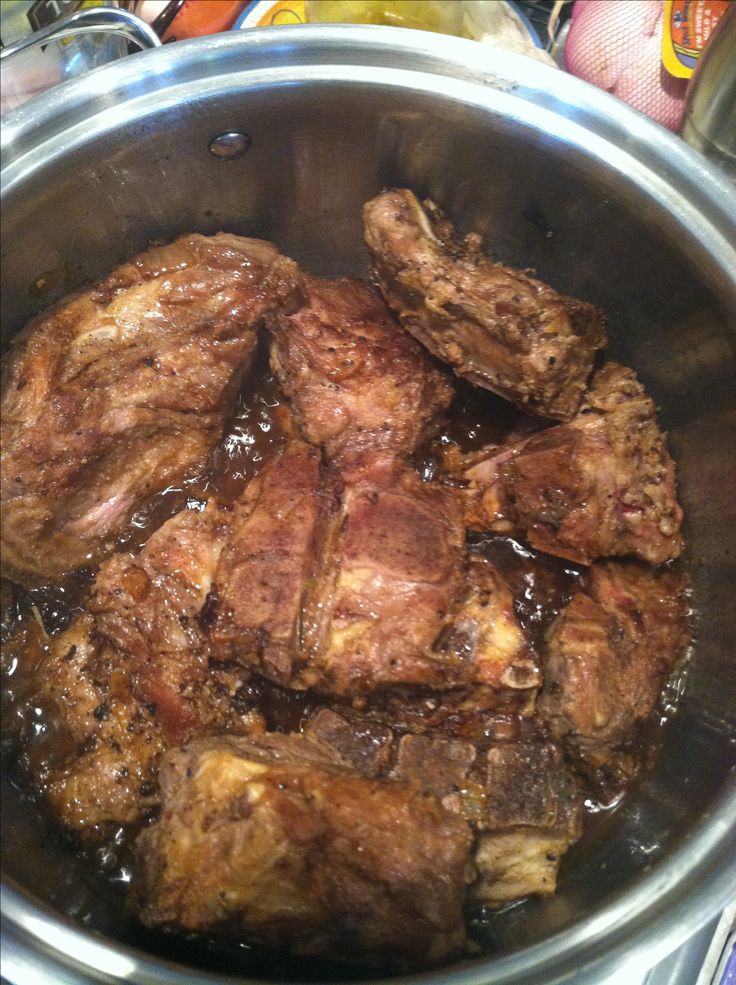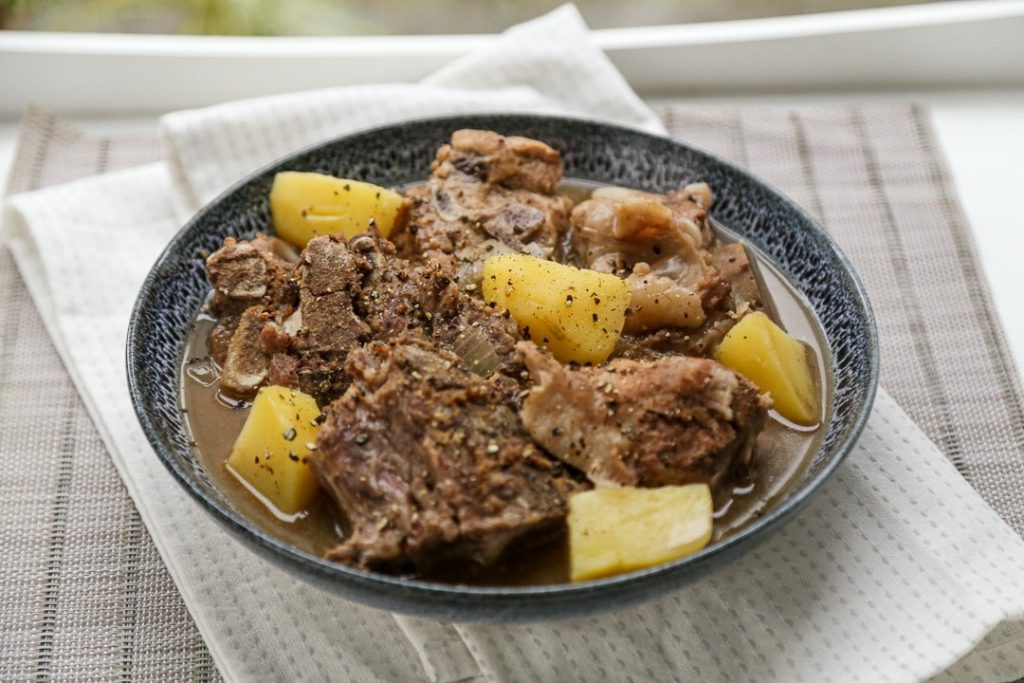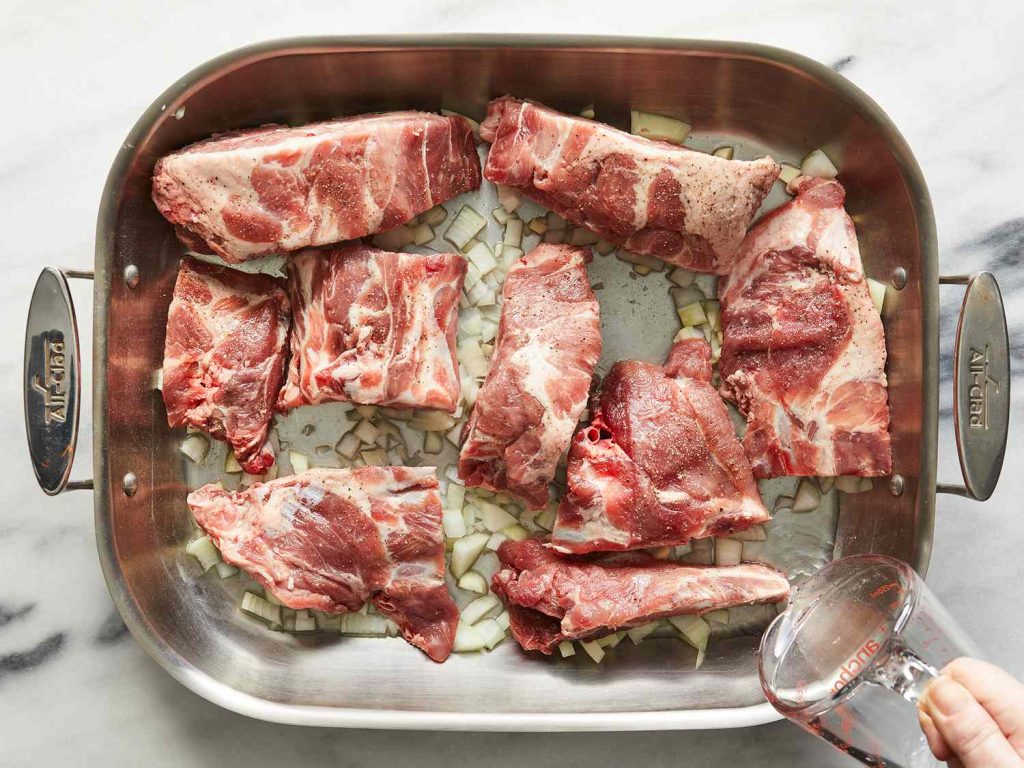Cooking Pork Neck Bones on the Stove: A Step-by-Step Guide
I. Introduction
Cooking pork neck bones on the stove is a flavorful and versatile method that can result in tender and succulent meat. Understanding the cooking time for pork neck bones is crucial to achieving the desired level of tenderness. In this article, we will explore the process of cooking pork neck bones on the stove, from preparation and seasoning to the importance of understanding cooking time.
II. Preparation and Seasoning
A. Selecting and preparing the pork neck bones
- Choosing high-quality pork neck bones: When selecting pork neck bones, look for bones that are fresh and have a bright pink color. Opt for bones that have a generous amount of meat attached, as this will contribute to the overall flavor of the dish.
- Cleaning and trimming the bones: Before cooking, rinse the pork neck bones under cold water to remove any impurities. Trim off excess fat or connective tissue but leave some fat, as it will enhance the flavor and moistness of the final dish.
B. Seasoning the pork neck bones
- Salt and pepper: Season the pork neck bones generously with salt and pepper, ensuring that all sides of the bones are coated. The salt will help to draw out moisture and enhance the natural flavors of the meat.
- Optional herbs and spices: You can further enhance the flavor profile of the pork neck bones by adding herbs and spices. Common choices include garlic powder, onion powder, paprika, thyme, rosemary, or bay leaves. Adjust the seasoning to your preference, but be mindful not to overpower the natural taste of the pork.
III. Cooking Pork Neck Bones on the Stove
A. Boiling the pork neck bones
When it comes to cooking pork neck bones on the stove, one of the simplest methods is to boil them. This cooking technique is not only easy but also helps to tenderize the meat and create a flavorful broth. To start, gather your ingredients and equipment, including a large pot and enough water or cooking liquid to cover the bones.
- Adding the pork neck bones to a pot Begin by placing the pork neck bones in a large pot. Depending on how many bones you have and the size of your pot, you may need to cook the meat in batches.
- Covering the bones with water or desired cooking liquid Next, pour enough water or your desired cooking liquid into the pot, ensuring that the bones are fully submerged. You can use water, chicken broth, beef broth, or a combination of both, depending on your preferences. Adding aromatics like onions, garlic, and herbs can also enhance the flavor of the cooking liquid.
B. Simmering the pork neck bones
Simmering the pork neck bones is the next step in the cooking process. It is a gentle, low heat cooking method that helps to retain the moisture and tenderness of the meat.
- Bringing the pot to a boil Place the pot on the stove over high heat and bring it to a boil. Once the liquid reaches a rolling boil, reduce the heat to a simmer.
- Reducing the heat to a simmer and partially covering the pot Lower the heat to a level where the liquid is gently bubbling, and partially cover the pot with a lid. This allows some steam to escape, preventing the liquid from boiling over while still allowing the meat to cook evenly.
C. Cooking time and tenderness
The cooking time for pork neck bones can vary depending on the size and thickness of the meat. It is important to ensure that the meat is cooked thoroughly and becomes tender for a delicious eating experience.
- Estimated cooking time for pork neck bones On average, pork neck bones should be simmered for approximately 1-2 hours. However, it is recommended to check the doneness and tenderness of the meat periodically to avoid overcooking.
- Checking the tenderness of the meat To check the tenderness, use a fork or tongs to gently press against the meat. If it easily separates and falls off the bone, it is ready. If not, continue simmering and periodically check until desired tenderness is achieved.
IV. Serving and Enjoying Pork Neck Bones
A. Straining and serving the meat
Once the pork neck bones are cooked and tender, it’s time to strain and serve the meat. Straining the cooking liquid will remove any impurities or unwanted ingredients, leaving behind a flavorful broth.
- Removing the pork neck bones from the cooking liquid Carefully remove the pork neck bones from the pot using tongs or a slotted spoon. Transfer the cooked meat to a platter or individual serving bowls.
- Serving the meat on a platter or in individual bowls Arrange the pork neck bones on a platter to showcase their mouthwatering appeal or divide them into individual bowls for each person to enjoy.
B. Optional sauce or gravy
To elevate the flavor of the pork neck bones, you can create a delicious sauce or gravy to accompany the meat. This adds an extra layer of taste and enhances the overall dining experience.
- Creating a flavorful sauce or gravy In a separate saucepan, melt butter or heat oil over medium heat. Add flour to create a roux, cooking it until it turns golden brown. Slowly whisk in the strained cooking liquid, ensuring there are no lumps. Continue cooking and stirring until the sauce thickens to your desired consistency.
- Pouring the sauce or gravy over the meat Once the sauce or gravy is ready, pour it over the cooked pork neck bones. The savory flavors will blend together, enhancing the taste and texture of the dish.
In conclusion, cooking pork neck bones on the stove is a simple and delicious way to enjoy this flavorful cut of meat. By boiling and simmering the bones, you can achieve tender and succulent results. Serve the meat on a platter or in individual bowls and, if desired, enhance the flavors with a tasty sauce or gravy. Enjoy this traditional dish with your favorite sides and savor the rich taste of pork neck bones.
